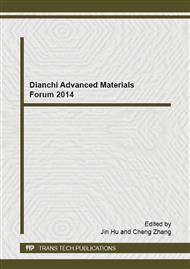p.213
p.217
p.221
p.229
p.236
p.240
p.244
p.248
p.253
Electrical and Optical Stability of Two Kinds of Different Element Doped Tin Oxide Film Carrier Materials in an Acid Environment
Abstract:
The stability of the fluorine doped tin oxide (FTO) and the indium doped tin oxide (ITO) films, which are used as gene chip carrier, are detected in an acid solution. The change of relative resistivity (Δ R/R) with immersion time and average visible light transmittance of the films are contrasted before and after immersing in 1 mol/L (1M) H2SO4 solution. The results indicate that the Δ R/R of ITO film sample increases rapidly with increasing the immersion time, and Δ R/R is 111% after 12 h;However, the Δ R/R of FTO film sample increases smoothly and the Δ R/R is 2.9% after 100 h immersion. At the same time, the average visible light transmittance of FTO film decreased, but ITO film is completely corroded, and the average visible light transmittance is close to the glass transmittance. The potentiodynamic polarization curves show that the corrosion current of FTO film is 1.749 × 10−6A and less than ITO,so the corrosion resistance of FTO film is higher than ITO film in 1M H2SO4 solution. Moreover, the corrosion morphology validates this conclusion.
Info:
Periodical:
Pages:
236-239
Citation:
Online since:
November 2014
Authors:
Price:
Сopyright:
© 2014 Trans Tech Publications Ltd. All Rights Reserved
Share:
Citation:


